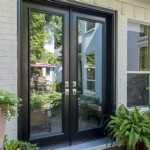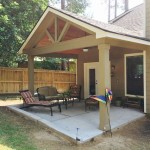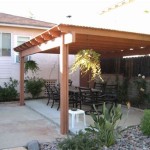```html
How To Drain A Paver Patio: A Comprehensive Guide
A paver patio is an attractive and functional addition to any property, providing an excellent space for outdoor living and entertainment. However, one of the most common challenges associated with paver patios is managing water drainage. Poor drainage can lead to a host of problems, including standing water, erosion, weed growth, and even structural damage. Effective drainage is therefore crucial for preserving the longevity and aesthetic appeal of a paver patio. This article provides a comprehensive guide on how to address drainage issues in paver patios, covering various methods and considerations to ensure proper water runoff.
Understanding the Causes of Poor Paver Patio Drainage
Before implementing any drainage solutions, it is important to understand the underlying causes of drainage problems in paver patios. Several factors can contribute to inadequate drainage, and identifying these factors is the first step toward finding the most appropriate solution.
One primary cause is improper grading. Grading refers to the slope or angle of the patio surface. Ideally, a paver patio should have a slight slope away from the house or any other structures to facilitate water runoff. If the patio is level or slopes towards a building, water will accumulate, leading to drainage issues. Incorrect grading can result from poor planning during the initial installation or from settling over time, which can alter the original slope.
Another common cause is inadequate base preparation. The base layer beneath the pavers is crucial for drainage. It typically consists of compacted gravel, which allows water to percolate through to the soil below. If the base layer is not thick enough, not properly compacted, or if it contains materials that impede drainage, water will accumulate within the patio structure. The type of gravel used is also important; using excessively fine gravel can reduce permeability.
Furthermore, the type of soil surrounding the patio can influence drainage. Clay soil, for example, has poor drainage properties and can contribute to water accumulation if the patio is built on or surrounded by it. In such cases, the surrounding soil may need to be amended to improve its drainage capacity.
Joints between pavers also play a role in drainage. While the primary function of the joints is to allow for expansion and contraction of the pavers, they also contribute to water permeability. If the joints are filled with impermeable materials, such as polymeric sand that has hardened excessively, water cannot drain through them, leading to surface ponding.
Finally, external factors such as heavy rainfall, melting snow, and irrigation systems can overwhelm the drainage capacity of a paver patio, particularly if the patio is not designed to handle large volumes of water. Addressing the root causes of poor drainage is imperative for implementing effective long-term solutions.
Implementing Drainage Solutions for Paver Patios
Once the causes of poor drainage are understood, several strategies can be employed to improve water runoff from a paver patio. These strategies range from simple surface adjustments to more extensive subsurface drainage systems. The optimal approach will depend on the specific characteristics of the patio, the surrounding environment, and the severity of the drainage problem.
One of the simplest and most effective solutions is to correct the grading of the patio. This involves adjusting the slope of the patio surface to ensure that water flows away from structures and towards a designated drainage area. This can be achieved by lifting and relaying the pavers, adjusting the base layer, and ensuring a consistent and adequate slope. The recommended slope for a paver patio is typically around 1/4 inch per foot.
Another important step is to ensure proper joint filling. The joints between pavers should be filled with permeable materials, such as polymeric sand that remains flexible. Avoid using excessive amounts of polymeric sand or allowing it to harden excessively, as this can impede water flow. Regularly sweeping the patio to remove debris and loosen compacted sand can help maintain the permeability of the joints.
For patios with more severe drainage problems, a subsurface drainage system may be necessary. A French drain is a common type of subsurface drain that consists of a trench filled with gravel and a perforated pipe. The trench is typically located along the lower edge of the patio, where water is likely to accumulate. The perforated pipe collects water and directs it away from the patio to a designated drainage area, such as a storm drain or a dry well.
Another option is to install a channel drain along the edge of the patio. Channel drains are linear drains with a grate on top that allow water to enter and flow into a pipe that carries it away. These drains are particularly effective in areas where water tends to pool, such as along the edge of a building or where the patio meets a lawn.
In some cases, it may be necessary to improve the drainage of the surrounding soil. This can be achieved by amending the soil with organic matter, such as compost or peat moss, which improves its drainage capacity. Another option is to install a drainage system, such as a series of interconnected pipes, to collect and redirect water away from the patio.
When selecting a drainage solution, it is important to consider the long-term maintenance requirements. For example, French drains and channel drains may require periodic cleaning to remove debris and prevent clogging. Proper maintenance is essential for ensuring the continued effectiveness of any drainage system.
Considerations for Designing a New Paver Patio with Effective Drainage
When designing a new paver patio, it is crucial to incorporate drainage considerations from the outset. This proactive approach can prevent drainage problems from arising in the first place and minimize the need for costly remedial measures later on. Several key factors should be considered during the design phase to ensure effective drainage.
First and foremost, proper grading is essential. The patio should be designed with a consistent and adequate slope away from structures and towards a designated drainage area. This slope should be carefully calculated to ensure that water flows freely and does not accumulate on the patio surface. The slope can be achieved by adjusting the height of the base layer during installation.
The base layer should be designed with appropriate materials and thickness to ensure adequate drainage. A well-draining gravel base is crucial for allowing water to percolate through to the soil below. The thickness of the base layer should be sufficient to handle the anticipated volume of water. Typically, a base layer of at least 4 to 6 inches of compacted gravel is recommended.
The choice of paver material can also impact drainage. Permeable pavers, which are designed with built-in drainage channels, can be used to enhance water infiltration. These pavers allow water to drain directly through the surface, reducing the amount of runoff and minimizing the risk of ponding. However, permeable pavers may require more frequent maintenance to prevent clogging of the drainage channels.
The design should also consider the surrounding environment. The type of soil, the proximity to buildings, and the presence of trees or other vegetation can all influence drainage. If the patio is located in an area with poor soil drainage, it may be necessary to amend the soil or install a subsurface drainage system to improve water runoff.
Finally, the design should incorporate appropriate drainage features, such as French drains, channel drains, or dry wells, to manage excess water. The type and placement of these features should be carefully considered to ensure that they effectively collect and redirect water away from the patio. The capacity of the drainage system should be sufficient to handle the anticipated volume of water during heavy rainfall or snowmelt.
By carefully considering these factors during the design phase, it is possible to create a paver patio that is not only aesthetically pleasing but also functionally sound and resistant to drainage problems. Proactive planning is the key to ensuring the long-term performance and durability of a paver patio.
```
How To Manage Drainage And Runoff With Paver Landscaping

Drainage Under Pavers Best Practices S

Stainless Steel Quick E Adjustable Patio Drain Outdoor

Channel Drain In Paver Driveway Sump Pump Patio French

The Best Patio Drainage Options Solutions

The Best Natural Artificial Paver Patio Drainage Options Western Interlock

Patio Drainage Solutions With Pavers Ideas For Your Paver Diy Design

Channel Drain With New Back Yard Sump Basin Driveway And Pavers

The Best Natural Artificial Paver Patio Drainage Options Western Interlock

Pavers Designed For Drainage By Tom Hatlen
Related Posts








